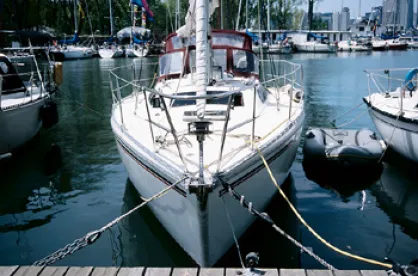Takeaway: To support a showing of obviousness, there has to be articulated reasoning with rational underpinnings to support a motivation to combine teachings.
In its Decision, the Board found that Petitioner had demonstrated a reasonable likelihood of prevailing in its patentability challenge to claims 1-5, 8-11, 13-16, and 18-20 of the ’897 patent. Thus, the Board instituted inter partes review of these claims on the asserted ground of anticipation under 35 U.S.C. § 102(b) in view of Svensson. No other unpatentability grounds set forth in the Petition were authorized.
The ’897 patent relates to a boat configured to modify its wake for wake surfing. Petitioner had sought inter partes review of claims 1-20 of the ’897 patent. The proposed grounds of unpatentability included anticipation of claims 1-5, 8-16, and 18-20 by Svensson under 35 U.S.C. § 102(b), as well as obviousness of claims 1-20 under 35 U.S.C. § 103 in view of various combinations including at least two of Svensson, Volvo, MasterCraft, Lochtefeld, Castillo, Sells, Lee, and Davis.
The Board began its analysis by construing certain claim terms under the broadest reasonable interpretation standard. Among other conclusions, the Board found that language in the preambles of the claims, including “surf boat” and “a boat configured to modify its wake for wake surfing,” to be non-limiting. The Board also interpreted “surf wake” to mean “a modified wake produced by a watercraft travelling through water” and interpreted “substantially perpendicular” to mean “approximately perpendicular.”
Turning to the unpatentability grounds, the Board concluded that Petitioner had demonstrated a reasonable likelihood of prevailing on its assertion that claims 1-5, 8-11, 13-16, and 18-20 are anticipated by Svensson. But the Board was not persuaded that Petitioner has adequately shown a reasonable likelihood of prevailing on its anticipation challenge to claim 12, primarily because the Board felt that Petitioner had not provided sufficient support or explanation for its assertion that Svensson inherently discloses all of the limitations of claim 12.
The Board also concluded that Petitioner had not adequately made out any of its proposed showings of obviousness. With respect to at least the proposed ground based on Svensson and Volvo, the Board found that Petitioner had not specifically identified the differences between the claimed invention and the prior art. And with regard to all of the claims for which an obviousness position had been argued, the Board found that Petitioner’s presentation of reasoning to combine the various asserted references was deficient.
Patent Owner argued that inter partes review should not be instituted because Petitioner was time-barred under 35 U.S.C. § 314(a). In this regard, Petitioner asserted that Patent Owner had filed a patent infringement lawsuit on October 31, 2013, which was followed the next day by Petitioner filing a declaratory judgment action in the Middle District of Florida. Petitioner further stated that the declaratory judgment action was dismissed without prejudice by Petitioner on January 22, 2014, “and therefore does not preclude the institution of this action.” In the end, the Board found that Petitioner’s declaratory judgment action for invalidity was dismissed without prejudice and therefore did not bar inter partes review under 35 U.S.C. § 314(a).
Nautique Boat Company, Inc. v. Malibu Boats, LLC, IPR2014-01045
Paper 13: Decision Denying Institution of Inter Partes Review
Date: November 26, 2014
Patent 8,539,897 B1
Before: Michael W. Kim, Donna M. Praiss, and Kristina M. Kalan
Written by: Kalan
Related Proceedings: Malibu Boats, LLC, v. Nautique Boat Company, Inc., Case No. 3:13-cv-00656 (Varlan/Guyton) (E.D. Tenn.)



 />i
/>i
